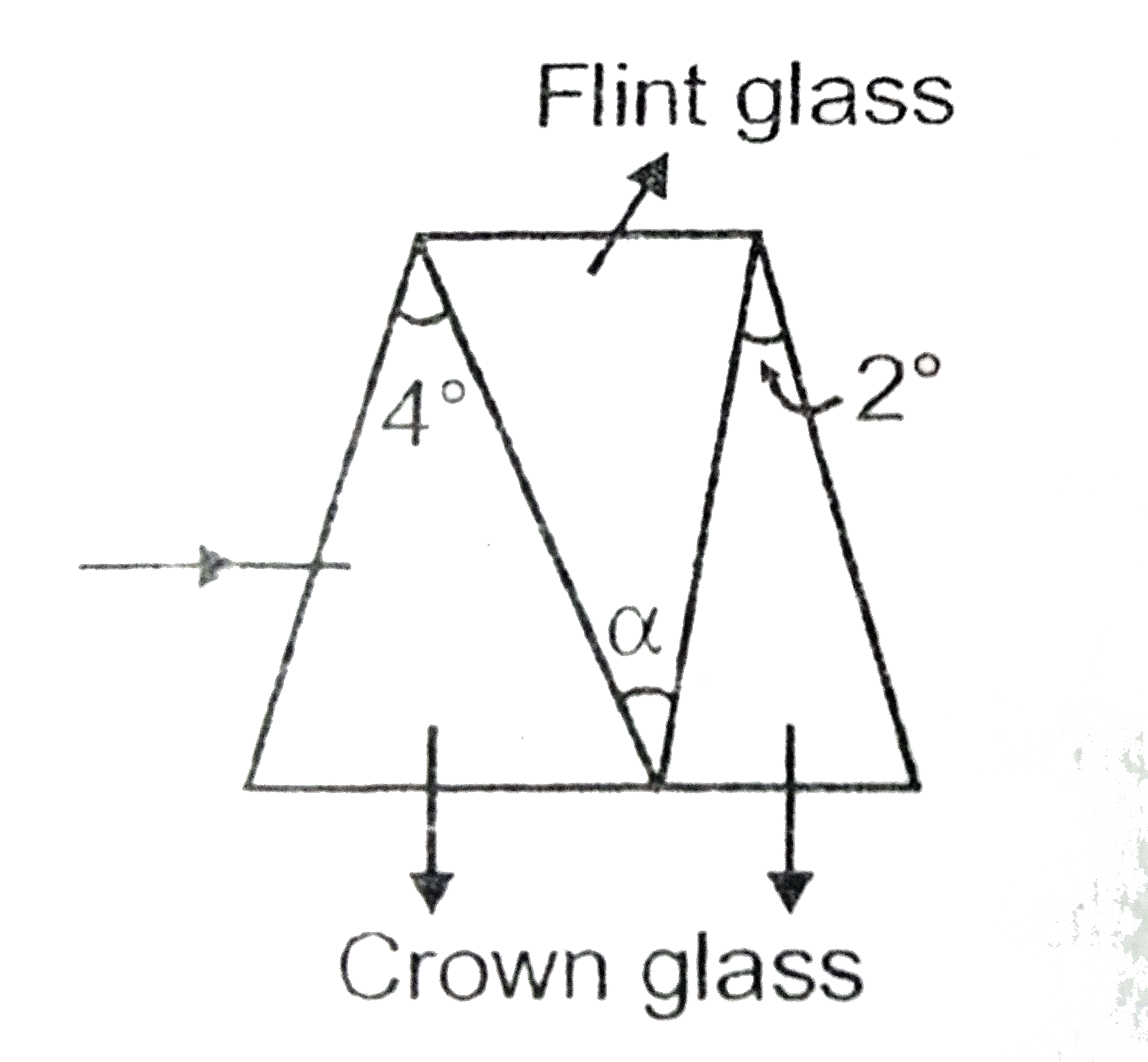The net angular dispersion without deviation is equal to
δ(1−ωω′)
δ(1−ω′ω)
δ(ω′−ω)
δ(ω−ω′)
The correct Answer is:C
Step by step video, text & image solution for The net angular dispersion without deviation is equal to by Physics experts to help you in doubts & scoring excellent marks in Class 11 exams.
Topper's Solved these Questions
- BOOK - TARGET PUBLICATIONCHAPTER - REFRACTION OF LIGHT EXERCISE - CRITICAL THINKING53videos
REFRACTION OF LIGHT
- BOOK - TARGET PUBLICATIONCHAPTER - REFRACTION OF LIGHT EXERCISE - COMPETITIVE THINKING80videos
REFRACTION OF LIGHT
- BOOK - TARGET PUBLICATIONCHAPTER - RAY OPTICSEXERCISE - EVALUATION TEST14videos
RAY OPTICS
- BOOK - TARGET PUBLICATIONCHAPTER - SCALARS AND VECTORSEXERCISE - Evaluation Test19videos
SCALARS AND VECTORS
Similar Questions
The refractive index of the crown glass for violet and red lights are 1.51 and 1.49 respectively and those of flint glass are 1.77 and 1.73 respectively. A narrow beam of white light is incident at a small angle of incident on shown combination of thin prism. Find values of α for which mean deviation of beam is zero. Also calculate net dispersing.
 View Solution
View SolutionA thin glass prism of angle 6∘ of refractive index 1.5 is combined with another glass prism of refractive index 1.6 to produce dispersion without deviation. What is the angle of the second prism ?
View Solution
Knowledge Check
- Question 1 - Select One
In dispersion without deviation
AThe emergent rays of all the colours are parallel to the incident rayBYellow coloured ray is parallel to the incident rayCOnly red coloured ray is parallel to the incident rayDAll the rays are parallel, but not parallel to the incident ray - Question 2 - Select One
The net angular dispersion produced without deviation for crown glass (μ=1.56) and flint glass (μ = 1.7) is
ApositiveBzeroCnegativeDinfinite - Question 3 - Select One
Quartile deviation is equal to:
AQ1−Q32BQ1+Q32CQ3−Q12DQ3+Q12
The arrngement of dispersion without deviation is used in ____
View SolutionAssertion: Two prisms of different materials can be used to attain a condition of angular dispersion without mean deviation.
Reason: When two prisms of appropriate materials and refracting angles are oppositely directed then mean deviation produced by one can be cancelled by the other due to opposite sense.View SolutionStatement-1 : Two prism joined in opposite alone can produce dispersion without deviation or deviation without dispersion.
Statement-2 : Dispersion is due to different deviation only.View SolutionA thin prism of angle 6∘ made of glas of recfractive index 1.5 is combined with another prism made of glas of μ=175 to produce dispersion without deviation. The angel of second prism is
View SolutionA thin prism of angle 6∘ made up of glass of refractive index 1.5 is combined with anorher prism made up of glass of refractive index 1.75 to produce dispersion without deviation. The angle of second prism is
View Solution

